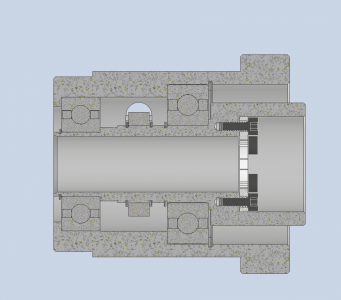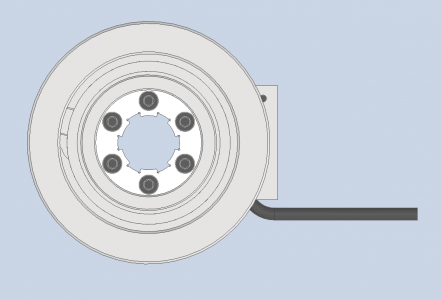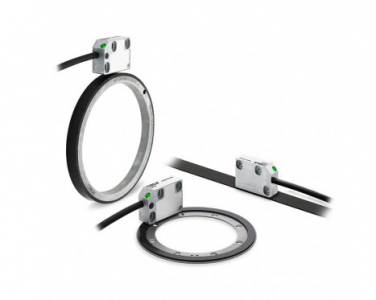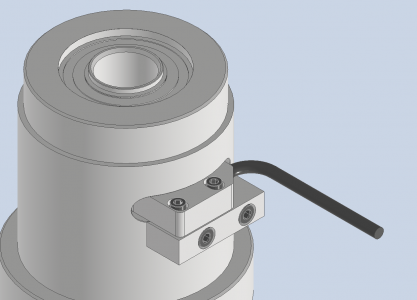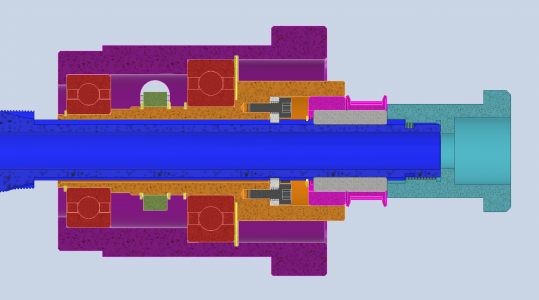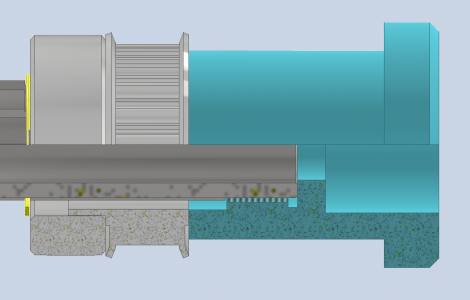Gave the spindle conundrum some more thought...
I put together a section view drawing (easy in CAD) and labeled all the components of the spindle assembly. The full assembly drawing is attached as PDF. It was still a bit hard to see, so I colorized a section of it in MS paint.
The issue I am fighting is excessive bearing heating at high speed, slightly from the lower bearings, but especially from the upper bearings. Once the spindle is hot (130*F or so) the rotation is moderately stiff indicating to me that the thermal expansion is applying tension to the entire bearing stack. Once at room temperature, the stiffness returns to normal.
This design ran fine at 5000 RPM, settling to 110*F. This equated to ~100-150W of heat loss in bearings and is acceptable. The current configuration is losing 600W+ of heat into bearings once they start binding up.
Here are the labeled components:
- Purple – Quill Housing, originally slid in the casting, now held in place by locking screw and top hat (light blue)
- Orange – Angular contact bearings, loaded back to back. Note, the model has the bearing and shaft fits incorrect, but they are correct on the machine.
- Dark Blue – Spindle
- Yellow – Drawbar, slides inside spindle, held under tension from spring stack
- Red – Deep Groove radial ball bearings
- Green – Upper bearing shaft, fixed in location by casting and bearings, originally had female spline to drive torque to spindle, now only provides radial support at top
- Pink – Spindle pulley, locates against top of upper bearing shaft (green) and held in place by spindle top hat (light blue). Keyed to spindle (dark blue)
- Light Blue – Spindle Top hat, threaded rigidly onto spindle. PDB pulls against this while compressing drawbar and spring stack. Holds pulley (pink) in place. Retains entire lower spindle assembly (dark blue, purple, orange) into casting.
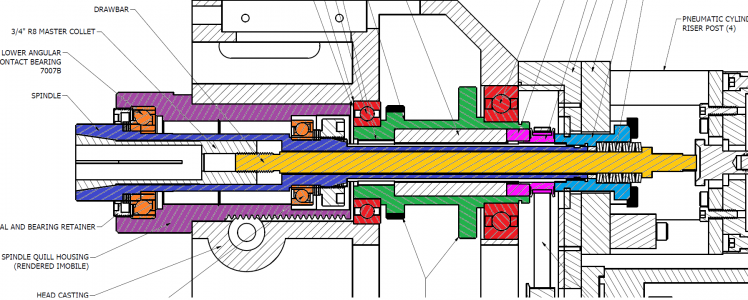
I spent a while trying to understand exactly how this grows thermally, and I think I finally understand it. It is important to understand that the Coefficient of Thermal Expansion (CTE) of cast iron is roughly 3.8 uin/in *F and steel is roughly 9.6 uin/in *F depending on alloy. What this means is that for every *F increase, steel will grow 3 parts for every 1 part that cast iron does. This is really important in understanding the growth in the stack.
In the diagram below, I labeled the major heat producers (the upper bearings in red) with a little campfire icon. These bearings are dumping heat into both the attached shaft (green) and the casting (white hashed). Two things cause a disadvantage: the iron casting is large and sinks heat away easily, and the shaft (green) is fairly thermally insulated and is steel. This means the green shaft can heat up substantially and grow far more than the cast iron housing. The lower bearing (red) is seated against a shoulder (indicated by the lock icon) and can move no further in this direction. This directs all the thermal growth upward (to the right) pushing the pulley (pink) tightly into the top hat (L. Blue). This top hat is rigidly connected to the spindle (D. Blue) and cannot move. This applies a ton of tension on the spindle shaft pulling the spindle upward. Since the lower spindle assembly (D. Blue, orange, purple) and the upper spindle assembly (red, green, pink) are separate components and have a gap between them, the force is transferred through the bearings, into the cast iron housing and back through another bearing.
The force is indicated by blue arrows along the bottom of the image. The spindle (D. Blue), is pulled upward against the lower AC bearing (orange). This pushes the quill housing (purple) into the housing (white). The force is then transferred through the lower radial bearing (red) which is seated against a shoulder, into the upper shaft (green), through the pulley (pink), and finally into the top hat (L. Blue).
The thrust force on the lower radial bearing (red) is really bad for it, reducing life and creating additional heat which makes the problem worse.
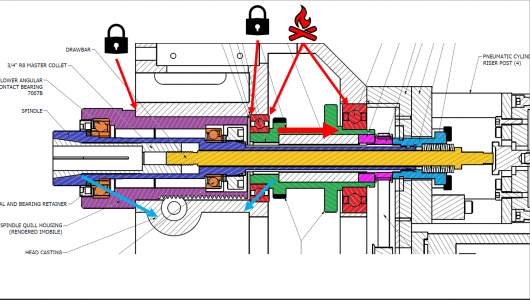
Other known problems:
- Deep groove bearings (red) not rated for >5000 or >7200 (couldn't find the exact answer) rpm.
- Pulley (pink) is a bit thicker than old pulley. Top Hat (L. Blue) clamps more firmly to this pulley, increasing spindle pre-tension.
- Retention of lower spindle assembly (Purple, orange, dark blue) is a poor design, but I’m stuck with this setup since this was a manual machine converted to CNC.
- Deep groove bearings experience some axial loading, even though they are only designed for radial load.
- Spindle is not balanced for 10k rpm.
Planned solution:
I will machine a new spindle adjuster nut. This is the white disc between the upper AC bearing (orange) and the lower radial bearing and spindle tube (red and green). Currently this component only is used to tension the AC bearings in the lower assembly and does not contact the upper assembly. In my modified design, the nut is thicker and will contact the inner race of the upper AC bearing (orange) and the upper spindle tube (green). This creates a continuous path of contact for the forces created by the top hat (L. Blue) and thermal expansion
without going through any bearings. This should permit the radial bearings to experience only radial load, and the AC bearings to experience only their preload plus any small amount of tension increase due to thermal expansion at the lower assembly which should be small since both the shaft and housing are steel and should expand at similar rates. Parallelism of the opposing faces of this nut, as well as perpendicularity to the thread pitch diameter are critical.
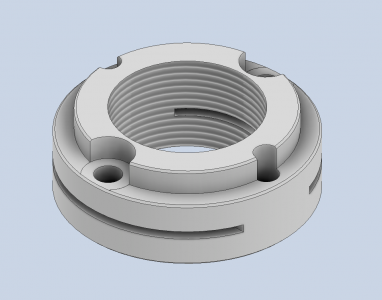
Other solutions I’m considering:
- Replace bearings (red) with hybrid or full ceramic bearings which can take the speed with grease lubrication. Cost is prohibitive from what I’ve seen. AliExpress does not have hybrid bearings in the 6209 size.
- Adjust preload on AC bearings (orange) to reduce heat at higher speeds.
- Re-machine pulley (pink), top hat (light blue), or install spacer between top hat and spindle (dark blue) to reduce tension on bearing stack.
- Replace entire upper bearing assembly (green, red) with new custom housing, shaft, and bearings. Goal is to use smaller diameter bearings which can handle 10k rpm with grease. New assembly would press into the existing bearing bores in head casting.
Solutions I’d rather not consider:
- Replace entire spindle with better design.
- Too much work, cost, and the head casting design is very limiting to the diameter that can be passed through.
- Replacing head casting too complicated and costly.
- Honestly, at some point it makes more sense to buy a new machine
- Active cooling
- No good place to implement, asymmetrical cooling would cause distortion.
- Reduce speed below 5000 rpm or limit duty cycle.
- Oil lubrication of bearings.
- Spindle is open and oil lubrication would be messy and lose oil without recirculation.





